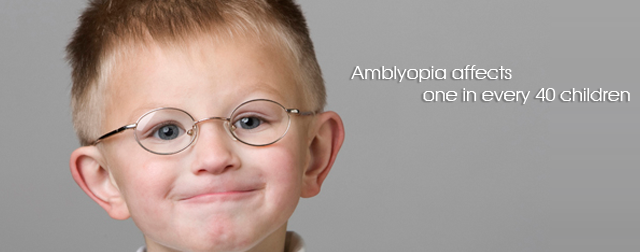 “LAZY EYE”, clinically known as Amblyopia, is the most common cause of vision impairment in children, teenagers and middle-aged adults today. An estimated 3% of the population suffers from it. If not detected and treated, amblyopia can cause a permanent loss of vision. Unfortunately, most people are unaware they even have it.
“LAZY EYE”, clinically known as Amblyopia, is the most common cause of vision impairment in children, teenagers and middle-aged adults today. An estimated 3% of the population suffers from it. If not detected and treated, amblyopia can cause a permanent loss of vision. Unfortunately, most people are unaware they even have it.
To “see” anything, our eyes must focus on an object or scene, and then send a message to the brain, which translates that instantly into what we “see”. The eyes are merely a window for the brain to tell you what you are seeing. This requires a strong connection between the eyes and brain, and sometimes one eye develops a stronger link with the brain than the other. The “weaker” eye may not focus as well as the other eye and, hence, send a blurred or incorrect image to the brain. This confuses the brain and, over time, the brain begins to ignore or suppress this eye’s signals – creating a “lazy eye”.
There are 4 very common reasons this may happen:
– Refractive – Types of vision problems typically corrected by glasses or contact lenses, such as nearsightedness, farsightedness, or an imperfection on the surface of the eye (astigmatism) – can cause one eye to become stronger than the other.
– Anisometropia – Vision prescription varying from eye to eye, such as one eye is -1.25 and the other -2.5. If both eyes cannot focus the image equally clear, conflicting messages go back to the brain, prompting it to inhibit the weaker eye.
– Strabismus – Crossed or wandering eyes due to a misalignment of the eyes, often not physically noticeable. When the eyes cross in or turn out, they cannot aim together at the same place, forcing the brain to block one eye in order to avoid the confusion of two different images.
– Deprivation – Any condition depriving the eye of clear vision such as a droopy eyelid, foreign material in the eye, cataract, injury or tumor.
If amblyopia develops from any of the above vision problems, one of the most frustrating situations to follow is a loss of depth perception. Depth perception is achieved when the brain processes the same picture from each eye and combines them to form a single 3-D image. Since the lazy eye is not sending an image because it is being blocked, the brain cannot form a 3-D image.
Someone with a lazy eye may not be aware he is seeing only two-dimensional. Warning signs include problems with hand-eye coordination and clumsiness, causing difficulties in such every-day activities as:
- Throwing, catching or hitting a ball
- Driving and parking a car
- Reaching out to shake someone’s hand
- Pouring liquid into a container
- Stepping off a curb or step
- Bumping into objects or tripping frequently
- Eyestrain worse in one eye than the other
- Threading a needle and sewing
- Enjoying the 3-D effects in a movie
Because amblyopia is a neurological defect of vision, it is not usually noticed physically, and most people do not know they are using only one eye at a time. The eye itself looks normal, but it is not being used normally because the brain is favoring the other eye. Left undiagnosed, this suppression by the brain can result in decrease of vision so severe that it cannot be corrected by glasses, contact lenses or surgery.
To diagnose amblyopia, contact a developmental optometrist for a visual acuity test. If amblyopia is present, the pathway between the eyes and brain can be strengthened through vision therapy. The basic starter tools include glasses, eye drops and patching the stronger eye to force the weaker eye to work. A further program of vision exercises, in conjunction with light therapy, can help reinforce the link between the weak eye and the brain. Eventually, the two eyes will learn to coordinate together with the brain.
Children diagnosed young respond well to vision therapy. Although amblyopia was once thought to be an irreversible condition for adults, we now know they also can be treated with vision therapy, due to current research that the brain can be retrained at any age.
If you or your child has any of the above symptoms or conditions, please contact us. Untreated amblyopia causes more vision loss in the under-40 age group than all injuries and diseases combined. Call us for more information or to schedule an examination.